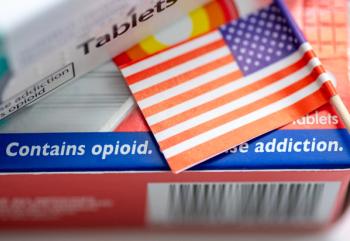
New Opioid Pain Management Regulations Pharmacists Should Know
As federal and other regulations on opioid pain relievers are changing, NCPA presented a panel discussion on “Opioid Pain Management and Your Pharmacy” at its Annual Convention in Boston.
As federal and other regulations on opioid pain relievers are changing, NCPA presented a panel discussion on “Opioid Pain Management and Your Pharmacy” on October 9 at the group’s Annual Convention in Boston.
The discussion centered on three aspects of opioid pain management: federal regulatory updates, work flow best practices for filling opioid prescriptions, and evaluating the abuse prevention policies in the community pharmacy.
Presenter Ronna Hauser, PharmD, vice president, Pharmacy Policy and Regulatory Affairs, NCPA, says the group has several recommended solutions for the opioid crisis, including establishing limits on maximum day supply for certain drugs, expanding electronic prescribing for controlled substances, encouraging alternatives to opioids for pain management, enhancing prescription drug monitoring programs (PDMPs), and increasing use and access to medication-assisted treatment for opioid abuse and addiction.
Policy Changes Coming
The presentation occurred within days of Congress’ passage of sweeping changes to federal rules related to the opioid crisis in Medicaid and Medicare programs. Many changes will start in 2019, though some won’t come into effect until 2021. “The main thing, I think, for our members is we're going to move to a mandated system of electronic prescribing for controlled substances in [Medicare] Part D starting in 2021,” Hauser told Drug Topics prior to her presentation. Electronic prior authorization will be required for Part D drugs starting then as well, she adds.
Another change is that there will be a new drug management program or “lock-in program,” for Part D patients, where plans lock patients into using one or more specific pharmacies or healthcare providers for their prescriptions of frequently abused drugs, Hauser says. However, she adds, “It's really the discretion of the [HHS] Secretary to determine what a frequently abused drug is. And then it's up to the discretion of the Secretary to determine how you identify patients eligible for a lock in.”
There will also be hard safety edits for opioids, with seven-day limits on initial opioid prescriptions for acute pain under Part D. There will also be a real-time safety edit at 90 morphine milligram equivalents (MME) per day, which could be triggered when a beneficiary reaches a cumulative level of 90 MME per day across all their opioid prescriptions, she notes. Patients in hospice care, long-term care facilities, who are receiving palliative or end-of-life, or are being treated for cancer-related pain will be exempt from these rules.
NCPA believes that only a small number of patients will be affected by the 90 MME per day requirement, she says. “Nevertheless it's going to be in existence and, I think, potentially grow in scope and size over time.” More federal legislation on opioids is expected in 2019, Hauser says.
How to Respond
After Hauser’s talk, Jordan Ballou, PharmD, BCACP, clinical assistant professor of pharmacy practice at the University of Mississippi School of Pharmacy, discussed policies that pharmacies should have in place when dealing with controlled substances. Policies should include what information to require from the patient; whether there should be a geographic limit to prescriptions, such as not filling those from providers outside a given distance from the pharmacy; when the PDMP should be checked; and what to do when patients request refills too early or too often.
Then Zach Forsythe, PharmD, a pharmacist with Hurricane Family Pharmacy in Hurricane, UT, looked back on how his pharmacy changed some of its practices after an armed robbery of the store. In southern Utah, where his pharmacy is located, there have been more than 20 night burglaries of pharmacies in 2017 and 2018. One independent store was hit three times in two months.
His pharmacy has added cameras, increased its employee training and counseling, put defined protocols in place, and added GPS trackers. It also added a sign in the window stating that the store was monitored by cameras and that Oxycontin and oxycodone are kept in a time-locked safe.
Newsletter
Pharmacy practice is always changing. Stay ahead of the curve with the Drug Topics newsletter and get the latest drug information, industry trends, and patient care tips.































































































































